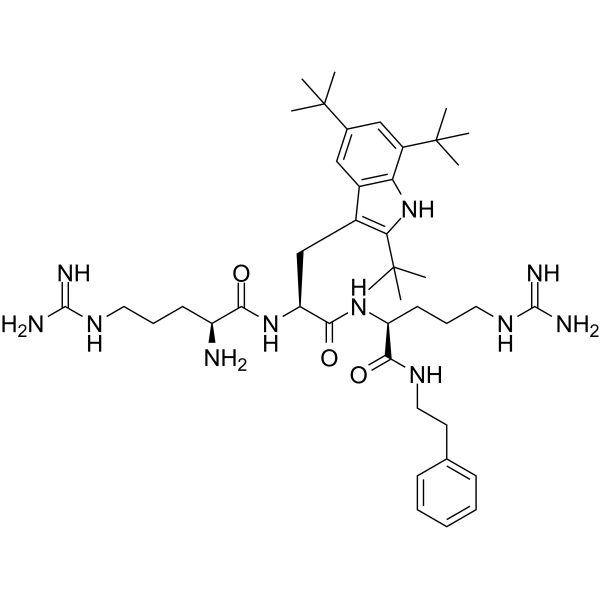1166254-80-3
| Name | ltx-109 |
|---|---|
| Synonyms |
Lytixar
(2S)-2-amino-5-(diaminomethylideneamino)-N-[(2S)-1-[[(2S)-5-(diaminomethylideneamino)-1-oxo-1-(2-phenylethylamino)pentan-2-yl]amino]-1-oxo-3-(2,5,7-tritert-butyl-1H-indol-3-yl)propan-2-yl]pentanamide UNII-HO813QDF65 |
| Description | Voxvoganan (LTX-109), a topical antimicrobial, is highly effective against S. aureus with a MIC range of 2 to 4 μg/mL. Voxvoganan can be used for the research of bacterial skin infections, fungal infections and nasal decolonisation of MRSA[1][2]. |
|---|---|
| Related Catalog | |
| In Vitro | Voxvoganan (LTX-109) is an investigational antimicrobial agent with a membrane-lysing mechanism of action, based on the biological principle of innate immune effectors, lytic peptides. Voxvoganan has a rapid bactericidal lytic activity. Voxvoganan demonstrates in vitro bactericidal activity against a number of S. aureus isolates resistant to several classes of antimicrobial agents evaluated in this study[2]. Voxvoganan (LTX-109) is a broad-spectrum, fast-acting bactericidal antimicrobial agent that binds to negatively charged membrane components on the bacterial cell wall, which leads to membrane disruption and cell lysis. Voxvoganan is a first-in-class chemically synthesized, small peptide drug that is stable against protease degradation. Topical application of Voxvoganan has a good safety profile and a low bioavailability. Voxvoganan demonstrates good activity against Staphylococcus aureus strains that are susceptible and resistant to mupirocin[3]. |
| References |
| Molecular Formula | C43H69N11O3 |
|---|---|
| Molecular Weight | 788.08000 |
| Exact Mass | 787.55800 |
| PSA | 263.38000 |
| LogP | 9.38830 |
